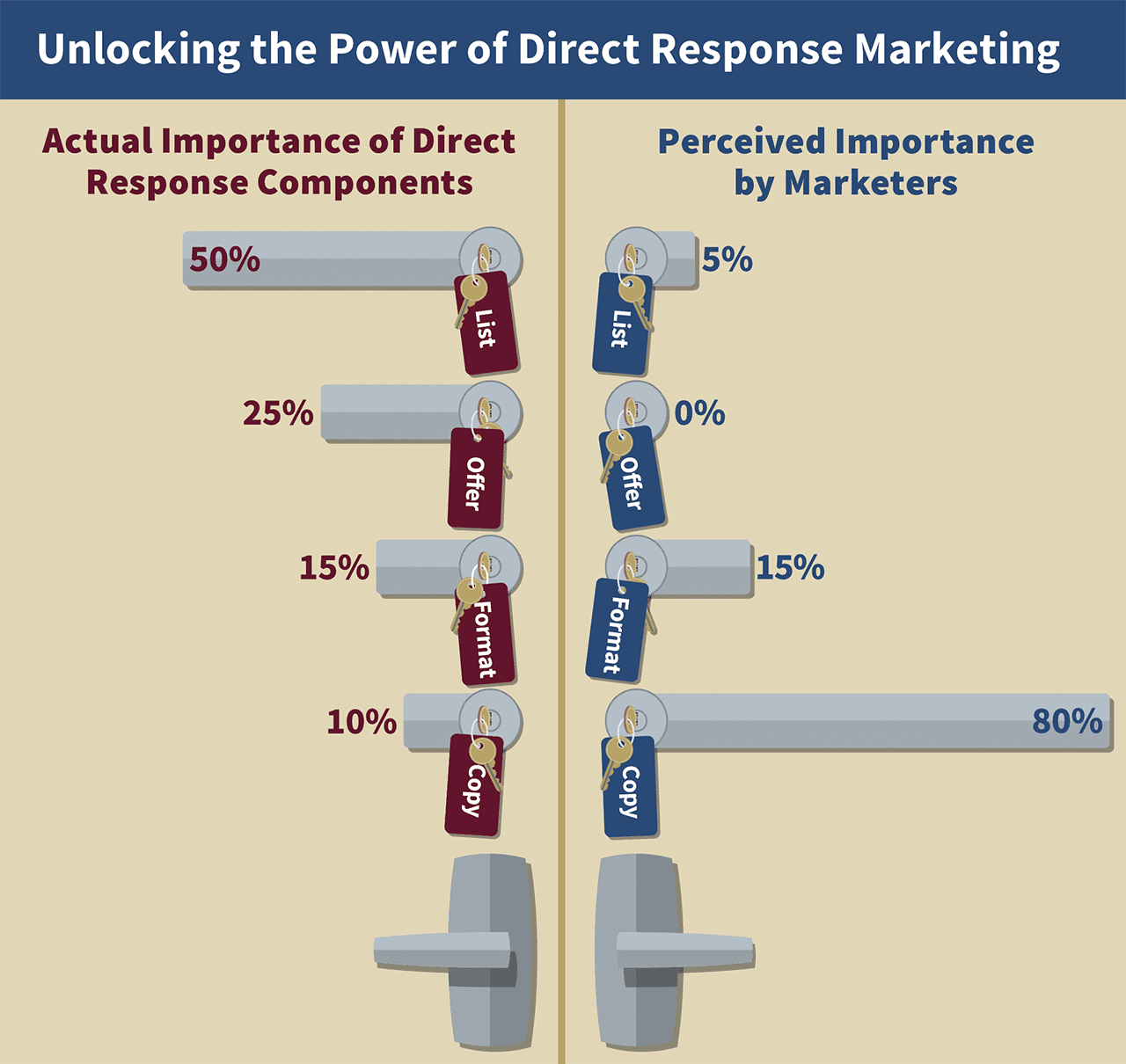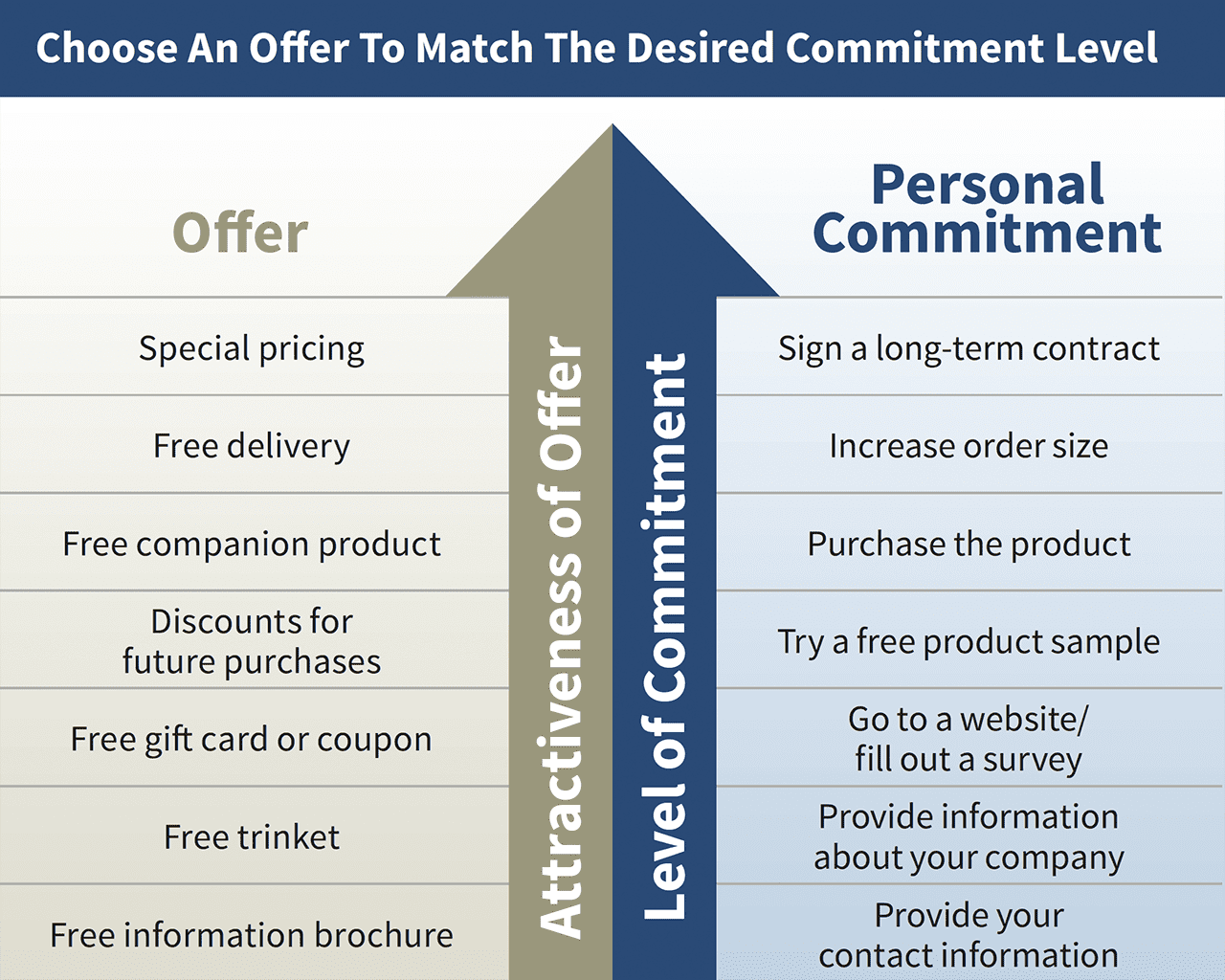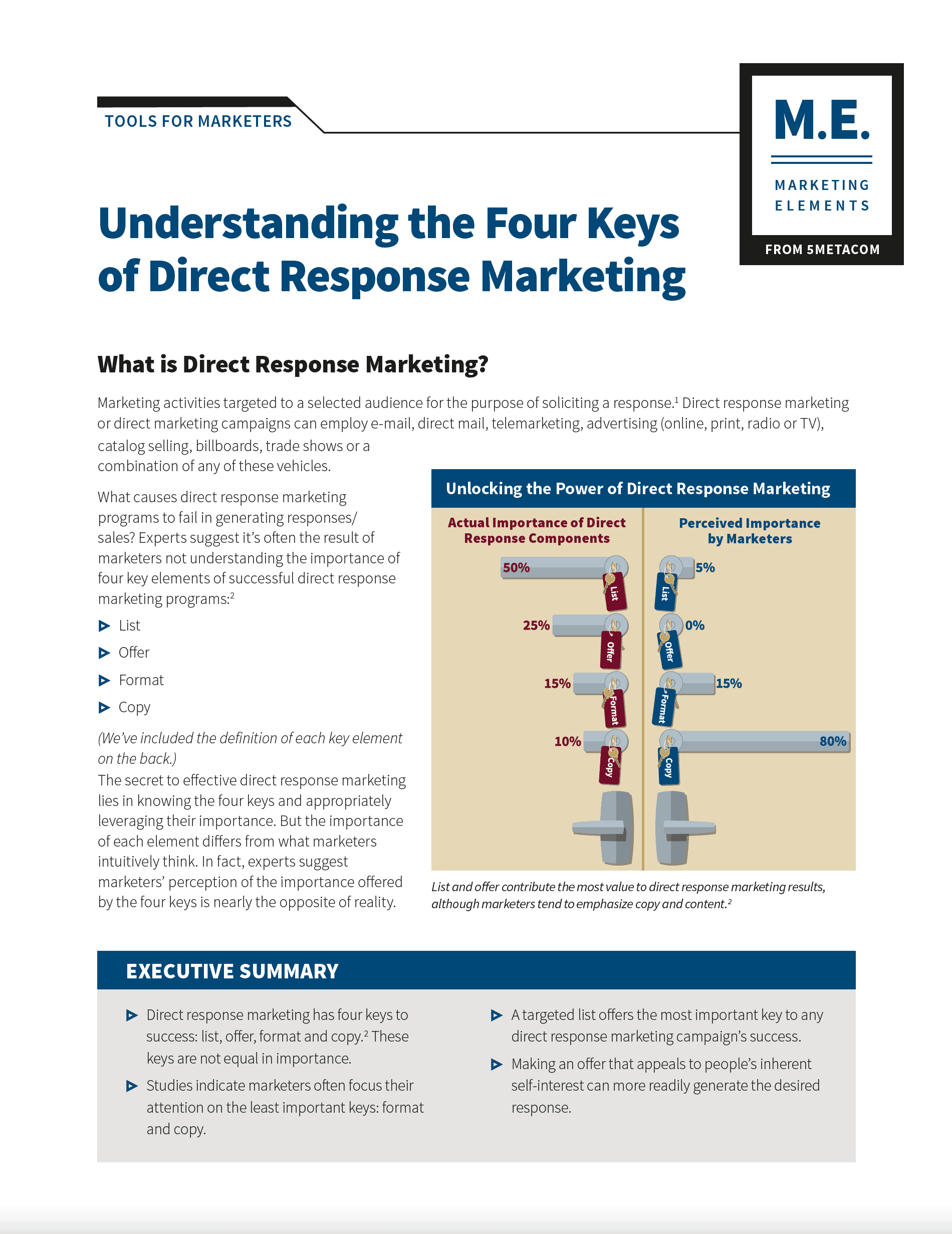Understanding the Four Keys of Direct Response Marketing
What is Direct Response Marketing?
Marketing activities targeted to a selected audience for the purpose of soliciting a response.1 Direct response marketing or direct marketing campaigns can employ email, direct mail, telemarketing, advertising (online, print, radio or TV), catalog selling, billboards, trade shows or a combination of any of these vehicles.
What causes direct response marketing programs to fail in generating responses/sales? Experts suggest it’s often the result of marketers not understanding the importance of four key elements of successful direct response marketing programs:2
List
Offer
Format
Copy
(We’ve included the definition of each key element below.)
The secret to effective direct response marketing lies in knowing the four keys and appropriately leveraging their importance. But the importance of each element differs from what marketers intuitively think. In fact, experts suggest marketers’ perception of the importance offered by the four keys is nearly the opposite of reality.

List and offer contribute the most value to direct response marketing results, although marketers tend to emphasize copy and content.2
EXECUTIVE SUMMARY
Direct response marketing has four keys to success: list, offer, format and copy.2 These keys are not equal in importance.
Studies indicate marketers often focus their attention on the least important keys: format and copy.
A targeted list offers the most important key to any direct response marketing campaign’s success.
Making an offer that appeals to people’s inherent self-interest can more readily generate the desired response.
Focusing Effort Where it Counts the Most
List (50%)
The group of customers or prospects targeted with a direct response marketing effort.2 Studies indicate 50% of a direct response program’s success is directly associated with the list. The list is often a group of names. But with radio spots, ads or trade show promotions, list refers to the audiences exposed to your message. Not all lists are created equal. The better targeted the list, the higher the potential response rate.3 Why? Communicating with people who simply don’t care about your products makes the other keys more or less useless. Conversely, communicating with people with an intense interest in your products or category drives the potential results even higher.
Offer (25%)
An inducement designed to entice customers or prospects to take action and respond.2 Experts say 25% of the success of a direct response marketing effort lies in the offer. In selecting an offer, keep in mind that self-interest is one of the prime motivators of people. They will, by nature, ask, “What’s in it for me?” So the more closely an offer appeals to the individual, the more likely he or she will take action. In general, people will more readily respond to an offer when they receive personal gain as opposed to others benefiting from the offer (e.g., employer, family members). In many cases, offering just information about your company or products is only effective with people very close to, or very interested in, the subject matter. When offering information, you’ll likely get few responses. But those who respond could be more highly qualified prospects.

Choosing an offer that corresponds to the commitment level you’re seeking can improve responses.
Format (15%)
The vehicle or medium to deliver the message content (including the offer) into the marketplace.2 Format contributes 15% to direct response marketing success. Format is the presentation of the information to the audience. In other words, how you will communicate with audiences: by phone, direct mail, radio spots, trade shows, sales calls, outbound telemarketing, etc.. Regardless of the format, it’s important to match the vehicle to the marketing task. So if you’re selling printer toner, you probably don’t need to show the product in order to succeed. You could use a radio spot or outbound telemarketing in this case. But if success requires audiences to see the product, select a format which accommodates a visual such as direct mail or a print ad.
Copy (10%)
Words used to communicate the message, content and offer to audiences.2 Copy and content provide only 10% importance to success in direct response marketing. We’ve focused on copy with this key, although this form of marketing involves other creative elements and content such as graphics, visuals and diagrams. Typically, much of the copy in direct response marketing is devoted to selling the offer, convincing audiences the offer is desirable and motivating them to take action. Words like “free,” “new,” “now” and “limited-time” can become powerful motivators to create a sense of urgency and get audiences to take action. Keep in mind, it’s important to sell audiences on the offer first. Once they show interest, you can sell them on the product later, maybe even as part of the fulfillment of the offer.
1 American Marketing Association Dictionary of Marketing Terms. Available at www.marketingpower.com as of January 2007.
2 Goldberg, B. and Emerick,T. Business-to-Business Direct Marketing, 1987.
3 Hession, B., Wong,T. and Sheehan, E. Click here for your free gift, 2005. Available at www.marketingpower.com as of October 2006.
